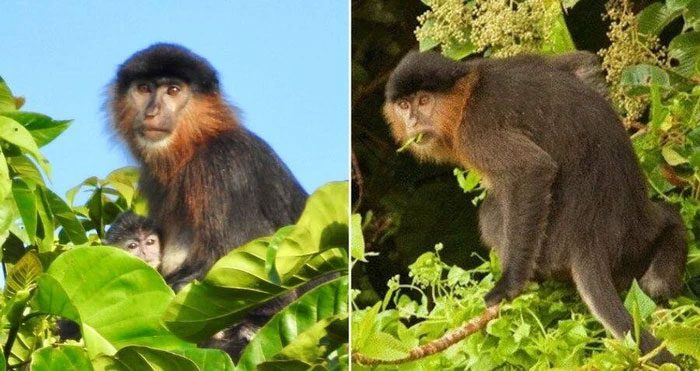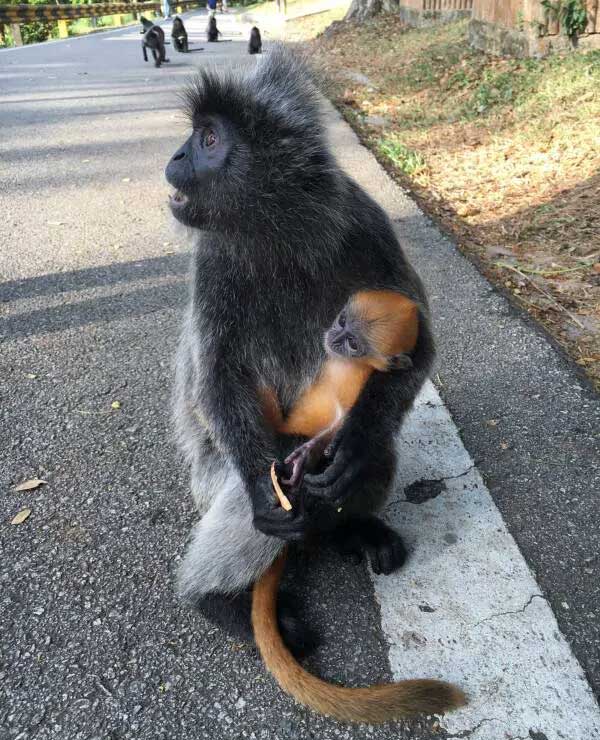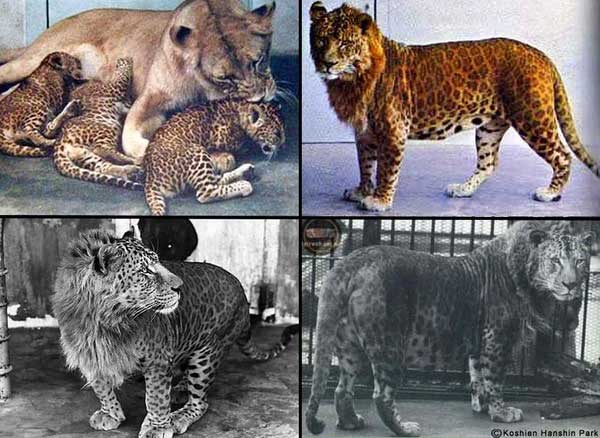This unusual primate species was first discovered near the Kinabatangan River on the island of Borneo, Malaysia, in 2017 when the individual was still a juvenile. This marked the first recorded hybrid of two primate species in the wild.
In 2017, a “mysterious hybrid monkey” surfaced on social media, capturing the attention of thousands online. Years later, this monkey has reappeared in Borneo, accompanied by a young one nestled against its chest.
This development has raised questions among biologists: Has reproductive isolation been broken? What biological mysteries lie within this hybrid monkey?

In a study published in the International Journal of Primatology in April 2022, scientists suggested that this monkey is a hybrid of the Proboscis monkey (Nasalis larvatus) and the Silvered leaf monkey (Trachypithecus cristatus).
“Mysterious Hybrid Monkey” Discovered in Borneo
Borneo, located within the Malaysian archipelago, is a flat island with a tropical rainforest climate, largely covered by primary forests, contributing to its rich biodiversity.
Particularly, the monkeys here are considered a unique feature of the island. However, a “mysterious hybrid monkey” in 2017 completely disrupted the tranquility of the island.
A “strange” monkey was photographed in the primary forest. Unlike typical monkeys, this one has gray cheeks and a small, round nose, which has led many to speculate that it may represent a completely new species within the primate gene pool.

A Silvered leaf monkey discovered alongside the hybrid on a road in Malaysia in 2017.
To uncover the identity of the mysterious monkey, biologists observed it for an extended period and used taxonomic characteristics to hypothesize about its parent species, even extracting its feces for analysis.
Ultimately, they confirmed that its parents are the Proboscis monkey and the Silvered leaf monkey.
The Proboscis monkey and the Silvered leaf monkey are two distinct species. The Proboscis monkey, named for its large, prominent nose and pink cheeks, can grow to lengths of 73-76 cm and weigh up to 24 kg, while the average weight of the Silvered leaf monkey is only half that of the Proboscis monkey.
Thus, it’s evident that these two species differ significantly in terms of morphology, appearance, and behavior, with many reports indicating that they often engage in fights over territory. So, how could they produce a “hybrid monkey”?
Is Humanity the Main Cause?
In fact, there are many examples of animal hybrids, such as mules born from horses and donkeys, ligers (lion-tiger hybrids) and tigons (tiger-lion hybrids), and zorses (zebra-horse hybrids).
However, the emergence of these animals is usually a result of human intervention, and the “mysterious hybrid monkey” is an exception, having been born in the wild.
To investigate the root of the issue, biologists conducted an in-depth study of Borneo’s primary rainforest, but the results were beyond what anyone expected: it turns out that the culprit behind this hybridization is still humanity!

The hybrid between a tiger and a lion is a tigon (tiger-lion) and liger (lion-tiger). The hybrid between a lion and a leopard is a leopon (leopard-lion).
Borneo is indeed covered by vast areas of primary rainforest, which implies that its biological resources, land resources, and mineral resources are incredibly rich. Consequently, some entrepreneurs see numerous profit opportunities here.
Gradually, the area of primary forest began to shrink, leading to the fragmentation and overlap of the territories of these monkey species.
Nadine Ruppert, a lecturer at the University of Science in Malaysia and co-author of the study, believes this is a concerning sign of an imbalanced ecosystem. According to her, the males of both species often wander far from their families when they mature to seek mating opportunities. The fragmented habitat is preventing their chances of mating, which may explain the existence of the hybrid monkey.
Breaking Reproductive Isolation?
The existence of reproductive isolation acts as a natural barrier preventing different species from mating, meaning that closely related populations will not intermingle freely, and even if they do mate, hybrids often result in infertility.
The appearance of the “mysterious hybrid monkey” is merely an isolated case and does not imply that reproductive isolation has been breached across their entire population. In reality, before humans arrived in this region, these two monkeys coexisted peacefully in their territories without any hybridization events.
Currently, it remains unknown whether the young monkey born from the “mysterious hybrid monkey” will survive its second hybridization or whether it will be capable of reproduction once mature.
Thus, it cannot yet be proven whether reproductive isolation between the two species has been broken. In the future, biologists will need to continue exploring and researching.
While mating between different species can result in the creation of a “new species”, this situation is uncontrollable and may ultimately lead to the extinction of species with weaker genes, while biodiversity will decline, and ecological balance will be disrupted.


















































